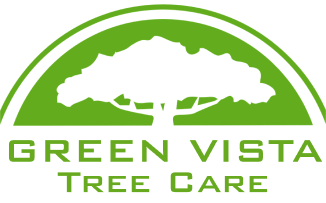Trees are resilient, but many issues can harm them: lack of water or sunlight, improper pruning, stress from drought or heat, and many pests or diseases.
One issue you may not know to look for, however, is when trees’ bark is torn or damaged.
In this article, we will cover what happens when a tree’s bark is damaged or missing, whether there’s anything you can do to help your tree, and at what point the lack of bark may mean it’s time to remove the tree.
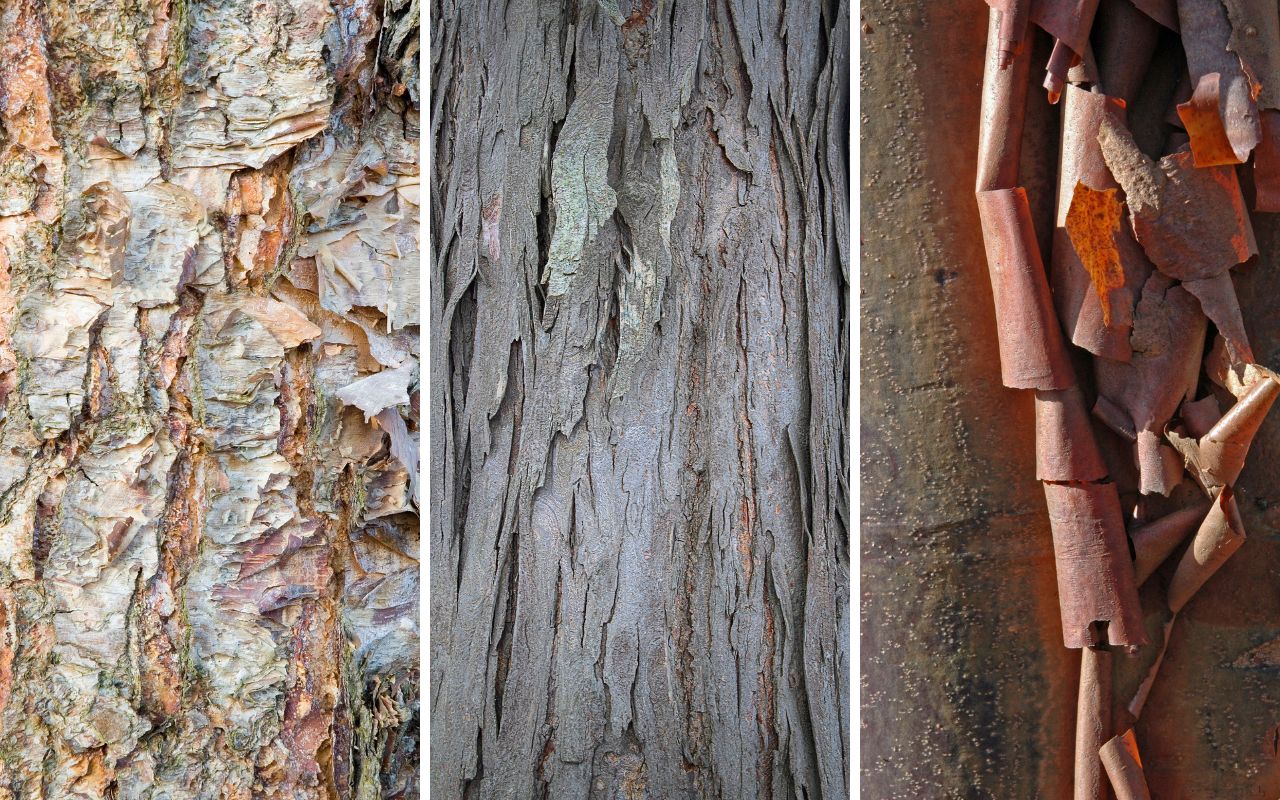
The naturally peeling bark of river birch, shagbark hickory, and paperback maple trees.
Some Northern Virginia Trees Have Naturally Peeling Bark
While peeling or missing bark is usually not something you want to see on your trees, some types have naturally peeling bark.
Trees in Northern Virginia that have bark that peels include:
- River Birch (Betula nigra)
- American Sycamore (Platanus occidentalis)
- Shagbark Hickory (Carya ovata)
- Black Cherry (Prunus serotina)
- Paperbark Maple (Acer griseum)
- Kousa Dogwood (Cornus kousa)
- Lacebark Pine (Pinus bungeana)
Most pine species will lose some bark near the base of the tree as they age.
One of the simplest ways to tell if your tree is okay despite peeling bark is to check what is below the bark that is peeling away. If you spot another layer of bark, the tree should be fine.
However, if you see the tree’s inner layers rather than more tree bark, the loss of bark may be problematic, especially if those layers are damaged as well.
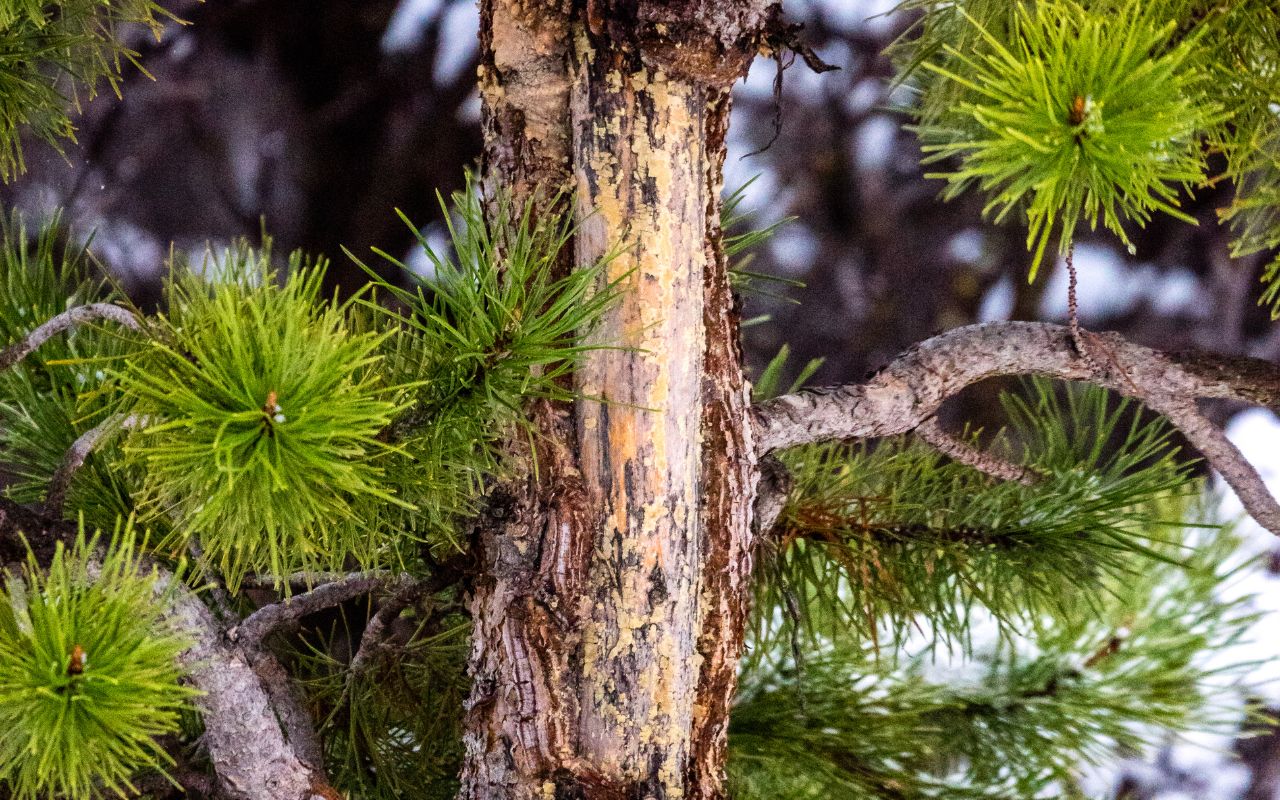
A pine tree in Northern Virginia with missing bark.
Check How Much Bark is Missing or Damaged
The good news is that if only a small section of a tree’s bark is damaged, the tree might recover.
If only the rough outer layer of bark is damaged, the tree can often repair itself because the growing layer of bark is still intact.
However, the more the inner wood is exposed to the elements, the more dangerous it is to the tree. This open wound can invite bacteria, fungus, and pests to enter and further damage your tree.
Many pests and diseases found throughout trees in Northern Virginia often enter through missing bark or an open wound in the tree.
While trees can seal off the wound caused by a lack of bark, they cannot regrow the missing bark. When your tree’s trunk is missing some bark, you first step should be to figure out how the bark was damaged or removed.

This tree was damaged by deer rubbing, when deer rub their antlers on tree trunks.
Determine What Caused the Bark Damage
Several factors can lead to damaged bark on your tree, from extreme weather to pest infestations and animal damage.
Here are some of the most common causes of bark damage to Northern Virginia trees:
- Weather damage from drastic temperature changes, including sunscald and frost cracks
- Storm damage from lightning, heavy snow or ice, or broken limbs or branches
- Insect pest damage, especially pests that bore into the inner bark
- Animals can cause damage by chewing, digging, or scraping. Deer, especially, can cause significant damage by rubbing their antlers on tree trunks.
- Fungal diseases can infect the bark and cambium layer, cutting off nutrients and causing the bark to peel.
- Drought and heat stress can cause the bark to dry and fall off.
- Excess moisture can lead to poor drainage, which can harm the roots and lead to fungal issues.
- Heavy traffic around a tree can cause the soil to become compacted. Soil compaction can lead to less water, oxygen, and nutrients reaching a tree’s roots. The bark may start to peel if the tree becomes stressed from the lack of water, oxygen, and nutrients.
- Many trees are damaged by lawnmowers, string trimmers, and even pedestrians.
Once you determine the cause of the bark damage, you can work to improve your tree’s health or protect it from any future damage.
Thankfully, many of our Northern Virginia trees can recover with proper care.
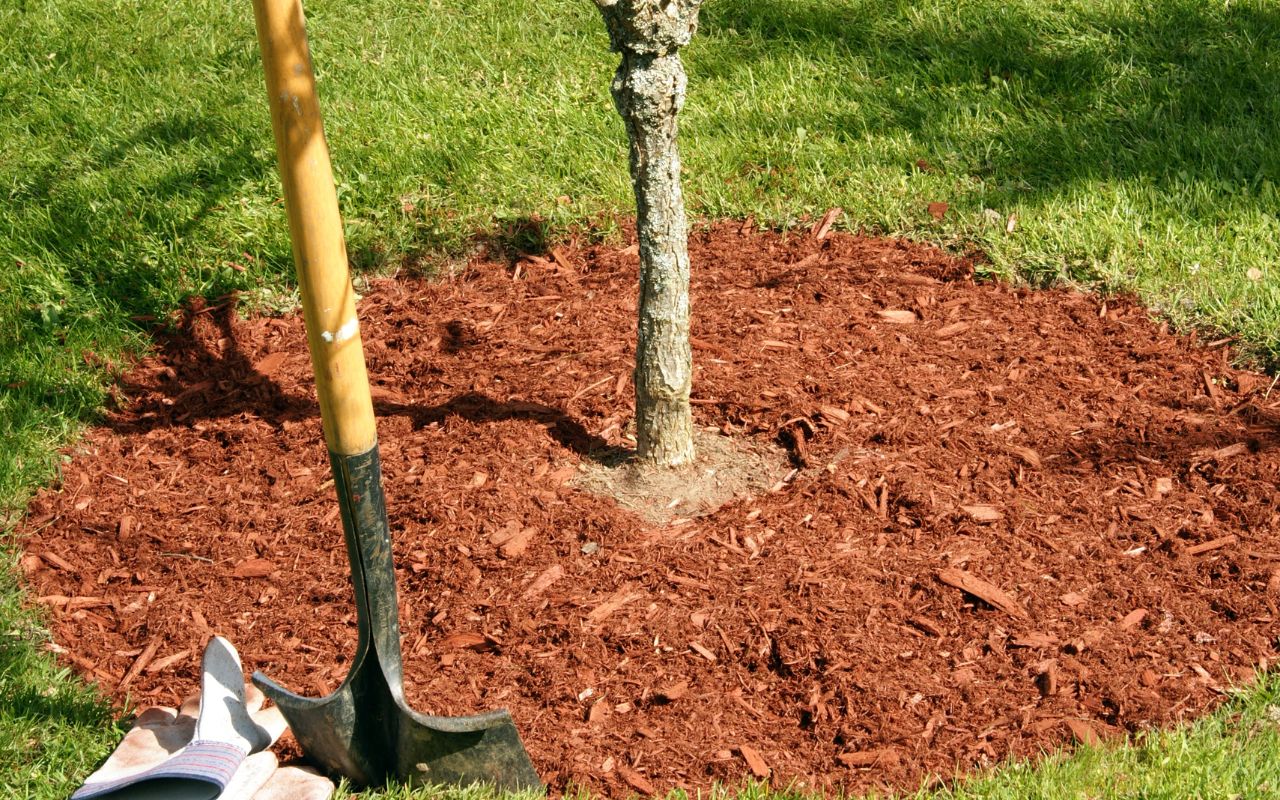
Placing wood mulch around a tree’s base can prevent accidental injury to the tree bark from lawnmowers and other yard tools.
Improve your Tree’s Health
If the damage to your tree was caused by environmental stressors such as lack of water or too much sunlight, you can take steps to remove those stressors, such as watering your trees or wrapping the delicate bark during the winter months.
It’s the same with other types of damage. If you’ve been mowing or trimming your lawn too close to your tree, add organic mulch. This prevents landscaping tools from getting too close to the tree’s trunk, and the organic wood mulch provides nutrients, temperature control, and moisture retention.
Ensure there is adequate drainage around your tree, and inspect for any signs of disease or pests. Some issues have preventative treatments.
Many trees, especially fruit trees, benefit from regular pruning, which increases the airflow in the tree’s branches and reduces the chance of fungal issues.
Even animal damage can be prevented by installing protective wire or wrapping your trees during certain times of the year. Homemade deer repellants, such as using Irish Spring soap, are also available.
You can keep your trees well-maintained by offering adequate water, sunlight, space to grow, soil drainage, and nutrients. Nutrients can be added through compost, mulch, or fertilization.
Schedule professional pruning to remove broken or overgrown branches and check for signs of pests or diseases.
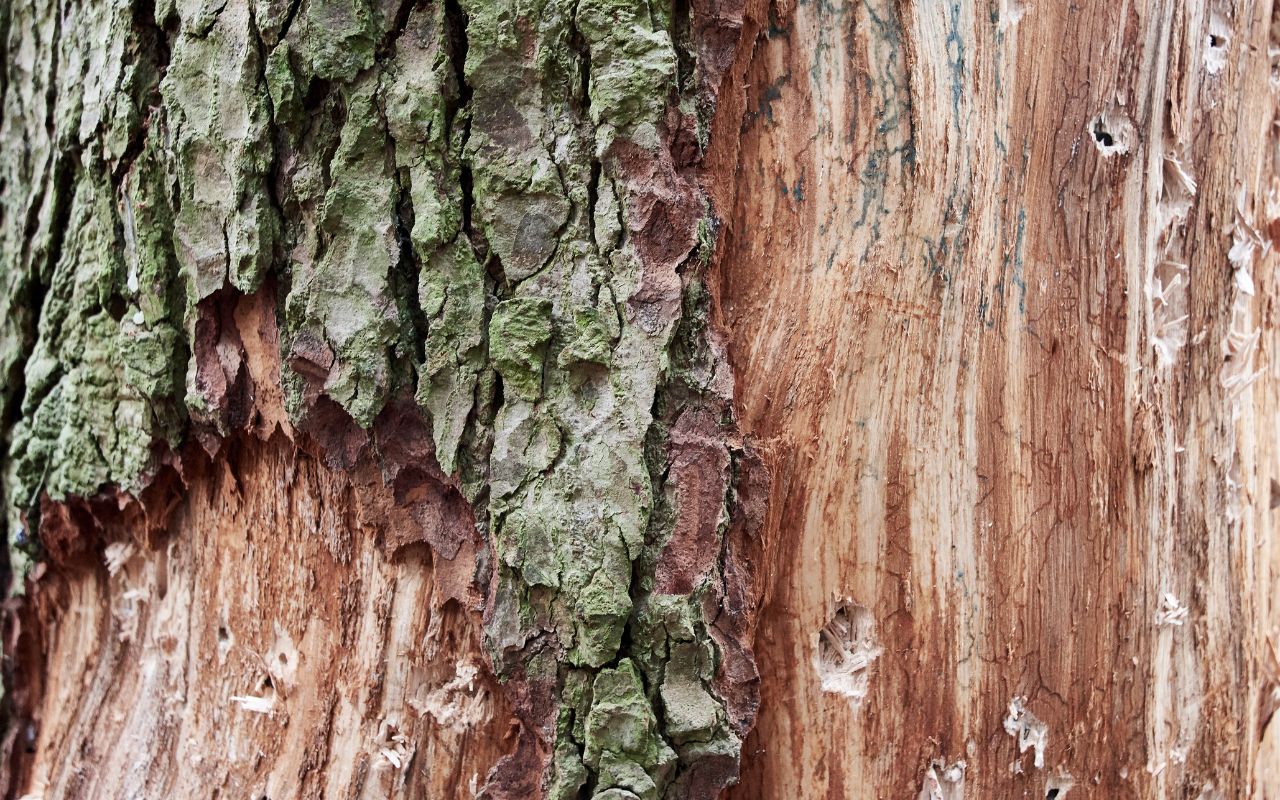
If Too Much Bark is Damaged or Missing, Consider Removing the Tree
However, there is a point at which too much bark can be lost from a tree. Unlike tree leaves, trees cannot regrow missing or damaged bark. Instead, the tree seals off the wound as best as it can.
If more than 40% of your tree trunk’s circumference is missing bark, it is unlikely that the tree will recover. If pests like the emerald ash borer (EAB) have attacked your tree, it is almost certain that it will decline quickly.
Missing bark often signifies a deeper issue, most of which can seriously harm or kill trees.
How to know when it is time to remove a tree >>
When an extensive amount of bark is missing from your tree, or you suspect a pest or disease is to blame, consult the professionals at Green Vista Tree Care to determine if your tree can be saved or needs to be removed. https://greenvistava.com/tree-removal/
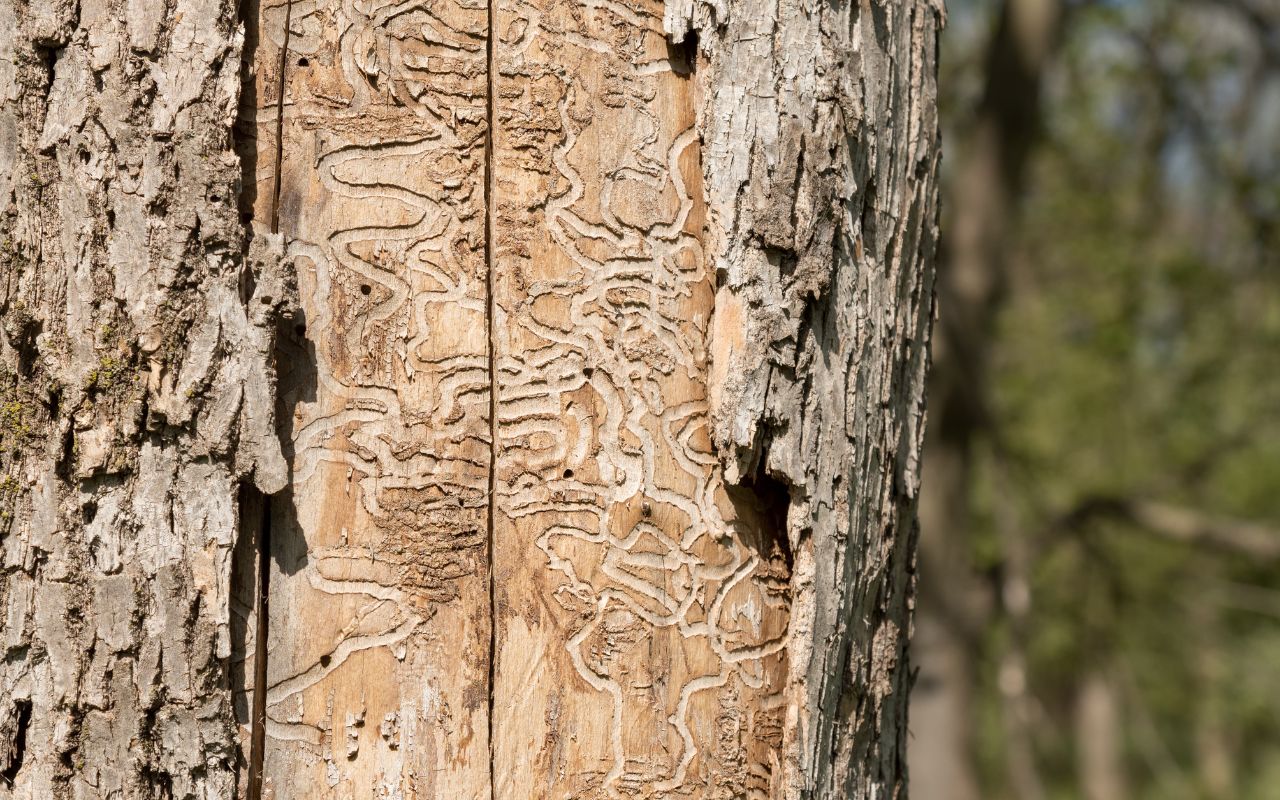
This dead tree with missing bark was clearly infected by emerald ash borer (EAB).
Contact Green Vista Tree Care for a Tree Inspection
If your Northern Virginia tree has been damaged or you notice missing or broken bark, contact the professionals at Green Vistas Tree Care to schedule a consultation.
Learn more about tree care consultations >>
We are familiar with the trees commonly grown in our area and what they need to thrive, and we have the knowledge to determine when it is best to remove a tree with missing bark.
Contact Green Vista the next time you notice any issues with your tree bark.
Get helpful tips, local news, inspiring stories, and more delivered right to your inbox every month. Don't miss another issue - join today!
